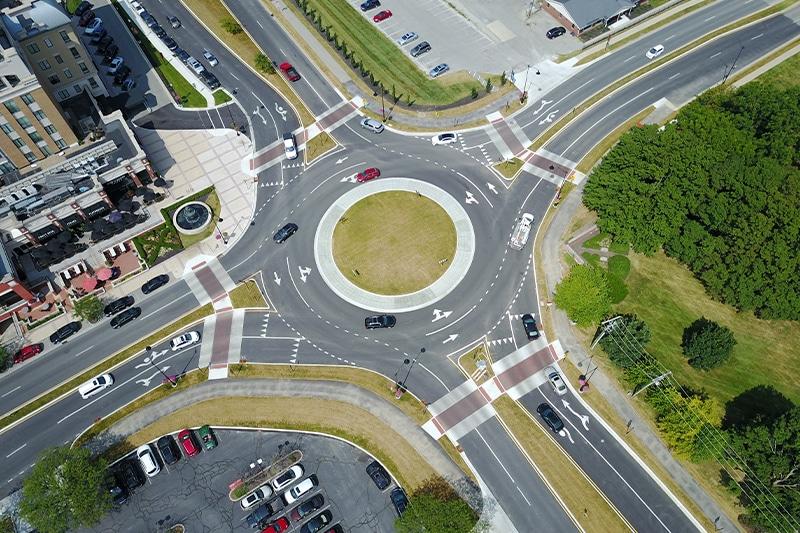Podcast: Play in new window | Download (Duration: 30:16 — 41.6MB)
Subscribe: Apple Podcasts | Spotify | More
Jim Brainard has a law degree, but he’s spent the past quarter-century thinking about circles. It’s a compliment, and it’s likely the reason why Carmel, Indiana is internationally famous.
The mayor of the 102,000-population city, located 23 miles northeast of the state’s capital of Indianapolis, is the country’s leading expert on the benefits of roundabouts.

Brainard, who has overseen the construction of 132 roundabouts in the 47-square-mile city, is our guest on this episode of The Weekly Driver Podcast.
Co-hosts Bruce Aldrich and James Raia talk with Brainard about his roundabout advocacy and how Carmel has adapted to its world prominence.
Brainard first became interested in roundabouts as a graduate student at Oxford University in England. The first modern roundabout, built in 1909, is located in Letchworth, England.
Mayor Jim Brainard: Roundabouts Save Lives
“Roundabouts have reduced traffic fatalities by 90 percent in Carmel,” said Brainard, who has traveled to many countries to study roundabouts. “The U.S. average fatality rate per 100,000 people is 14. It tends to be higher in suburban areas because the roads are built wider for faster speeds. Indianapolis has done a little bit better than normal—11.7 per 100,000. The average in Carmel is two.”
By definition, a roundabout (also called a circle, traffic circle, road circle, rotary, rotunda or island) is a circular intersection or junction in which road traffic is permitted to flow in one direction around a central island. The priority is typically given to traffic already in the junction.
Brainard has been Carmel’s mayor since 1996. In addition to the current roundabouts in the city, at least another seven more are planned. The mayor has also consulted with many cities around the country about the benefits of roundabouts. He often cites safety.
“With cars moving at 10-15 mph, a pedestrian who gets hit has a much better chance of surviving than if someone blows through a light or a stop sign at 50,” he said.
According to Brainard, a stoplight encourages drivers to increase their speed to get through an intersection. In a roundabout, he says drivers have to decrease their speed to 15 to 25 miles per hour. As a result, Brainard notes vehicle accidents involving occupant injuries requiring hospital visits have been reduced by more than 75 percent.
Modern roundabouts became more popular in the United States in the 1990s, much in part to Brainard. About 5,000 roundabouts are located throughout the country. Carmel has the most of any city by several-fold.
Not everyone is a believer. According to Wikipedia, the first modern roundabout in the United States was constructed in Summerlin, Nevada in 1990. It dismayed many residents, and a local news program reported, “Even police agree, roundabouts can be confusing at times.”
Eighty years earlier, architect John McLaren designed one of the first American roundabouts for both autos and streetcars (trams) in the Hatchett Residence Park. It’s now named San Jose, California.
In many European countries, roundabouts are the rule, not the exception. France, by its latest official government tally, has more than 50,000 roundabouts. The United Kingdom has about 25,000 roundabouts.
During the podcast, Brainard also discusses the costs of making roundabouts, environmental aesthetics and the public’s response to the city’s reputation as the “Roundabout Capital of the World.”
The Weekly Driver Podcast encourages and appreciates feedback from our listeners. Please forward episode links to family, friends and colleagues.
And you are welcome to repost links from the podcast to your social media accounts.
Support our podcast by shopping on Amazon.com.
Please send comments and suggestions for new episodes to James Raia via email: [email protected].
All podcast episodes are archived on www.theweeklydriver.com/podcast
Every episode is also available on your preferred podcast platform:
Google Play
iTunes
Spotify
Stitcher
iheartradio
Article Last Updated: August 17, 2020.
